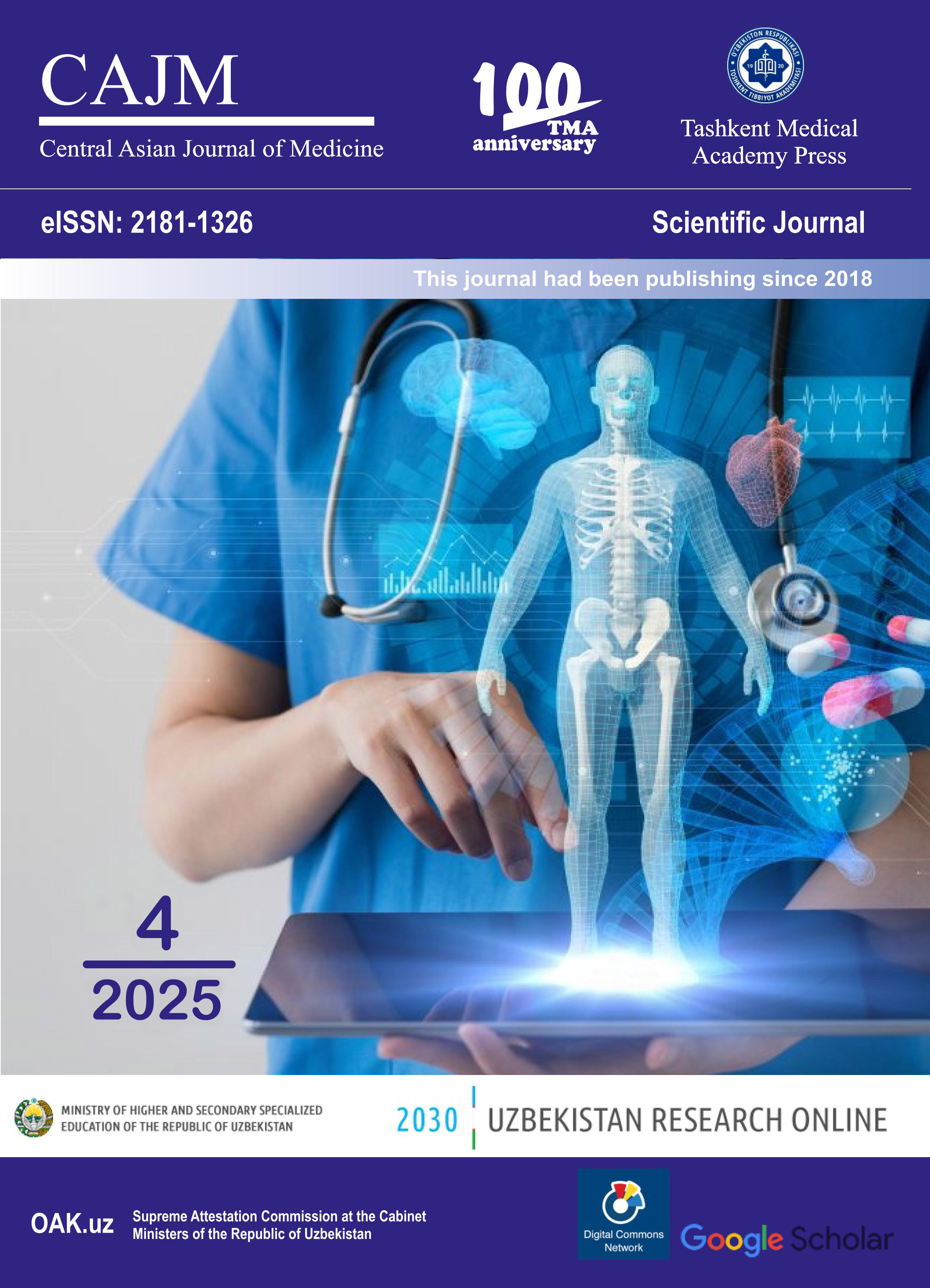COMPARATIVE EFFECTIVENESS OF A LOCALLY ADAPTED SALINE-BASED DEL NIDO CARDIOPLEGIA IN PEDIATRIC SEPTAL DEFECT REPAIR
Keywords:
Myocardial protection, pediatric heart surgery, del Nido cardioplegia, ischemia-reperfusion injury, congenital heart disease.Abstract
Background: In pediatric cardiac surgery, the prevention of ischemic myocardial injury remains a key factor in ensuring favorable outcomes. The cardioplegia technique selected during surgery plays a decisive role in protecting the immature myocardium in infants and toddlers undergoing correction of congenital heart defects (CHDs).
Aim: To evaluate and compare the incidence of early postoperative myocardial injury in children aged 12 to 36 months who underwent open surgical repair of septal congenital heart defects, depending on the type of cardioplegic solution applied-crystalloid versus a locally adapted blood-based del Nido cardioplegia.
Study Design and Methods: This single-center, prospective, comparative clinical study was carried out at the National Children's Medical Center (Uzbekistan) from February 2021 to December 2024. Ninety-one pediatric patients with atrial or ventricular septal defects were assigned to two treatment arms: 44 children received traditional cold crystalloid cardioplegia, while 57 were treated using a modified del Nido solution containing oxygenated blood in a 4:1 ratio. The main outcome measure was a persistent >10-fold elevation in plasma troponin I within 6 hours postoperatively and at the 24-hour mark. Additional parameters included left ventricular ejection fraction (LVEF) changes and need for inotropic support.
Findings: The rate of significant troponin I elevation was considerably lower in the del Nido group (31.3%) than in the crystalloid group (62.5%; p < 0.001). Although both groups demonstrated a postoperative decline in LVEF, the reduction was markedly less in the del Nido group (18% vs. 30.7%), suggesting more efficient myocardial protection.
Conclusions: The use of a blood-enhanced del Nido cardioplegia formulation demonstrated clear clinical advantages over crystalloid cardioplegia in pediatric patients undergoing septal defect repair, resulting in reduced biochemical markers of myocardial injury and better preservation of ventricular contractility in the early postoperative period.
References
Adan A, Eleyan L, Zaidi M, et al. Ventricular septal defect: diagnosis and treatments in neonates—a systematic review. Cardiol Young. 2021; 31(5):756–761. doi:10.1017/S10479511 20004576
Aly D, Madan N, Kuzava L, Samrany A, Parthiban A. Comprehensive evaluation of left ventricular deformation using speckle tracking echocardiography in normal children: comparison of 3D and 2D approaches. Cardiovasc Ultrasound. 2022;20(1):3. doi:10.1186/s12947-022-00273-6Petrishchev YA, Levit AL. Effect of the temperature regime of artificial blood circulation on oxygen transport. Intensive Therapy. 2006;(4):101–104. [In Russian]
Devereaux PJ, Lamy A, Chan MTV, et al; VISION Cardiac Surgery Investigators. High-sensitivity troponin I after cardiac surgery and 30-day mortality. N Engl J Med. 2022;386(9):827–836. doi:10.1056/NEJMoa2000803
Drury NE, Yim I, Patel A, et al. Cardioplegia in paediatric cardiac surgery: A systematic review of randomized controlled trials. Interact Cardiovasc Thorac Surg. 2019;28(1):144–150.
Gaies MG, Jeffries HE, Niebler RA, et al. Vasoactive-inotropic score is associated with outcome after infant cardiac surgery: an analysis from the Pediatric Cardiac Critical Care Consortium and Virtual PICU System Registries. Pediatr Crit Care Med. 2014;15(6):529–537. doi:10.1097/ PCC.0000000000000153
Jacob S. Is blood cardioplegia superior to crystalloid cardioplegia? Interact Cardiovasc Thorac Surg. 2008;7(3):491–498.
Karthik S, Grayson AD, Fabri BM. A survey of current myocardial protection practices during coronary artery bypass grafting. Ann R Coll Surg Engl. 2004; 86:413–415.
Kotby AA, Abd Al Aziz MM, Husseiny AH, Al-Fahham MM. Detection of early myocardial injury in children with ventricular septal defect using cardiac troponin I and two-dimensional speckle tracking echocardiography. Pediatr Cardiol. 2020;41(8):1548–1558. doi:10.1007/s00246-020-02410-2
Petrishchev YA, Levit AL. Effect of the temperature regime of artificial blood circulation on oxygen transport. Intensive Therapy. 2006;(4):101–104. [In Russian]
Su JA, Kumar SR, Mahmoud H, et al. Postoperative serum troponin trends in infants undergoing cardiac surgery. Semin Thorac Cardiovasc Surg. 2019;31(2):244–251. doi:10.1053/j .semtcvs.2018.08.010
Uglova EV, Larionov PM, Lomivorotov VN, et al. Comparative assessment of myocardium protection methods with analysis of DNA damage in cardiomyocytes in infants. Circulation Pathology and Cardiac Surgery. 2009;(2):30–33. [In Russian]
Uglova EV, Nartsissova GP, Kniazkova LG, et al. Clinical and biochemical aspects of myocardium protection efficiency during major surgery for congenital heart diseases in infants. Circulation Pathology and Cardiac Surgery. 2011;(1):41–48. [In Russian]

